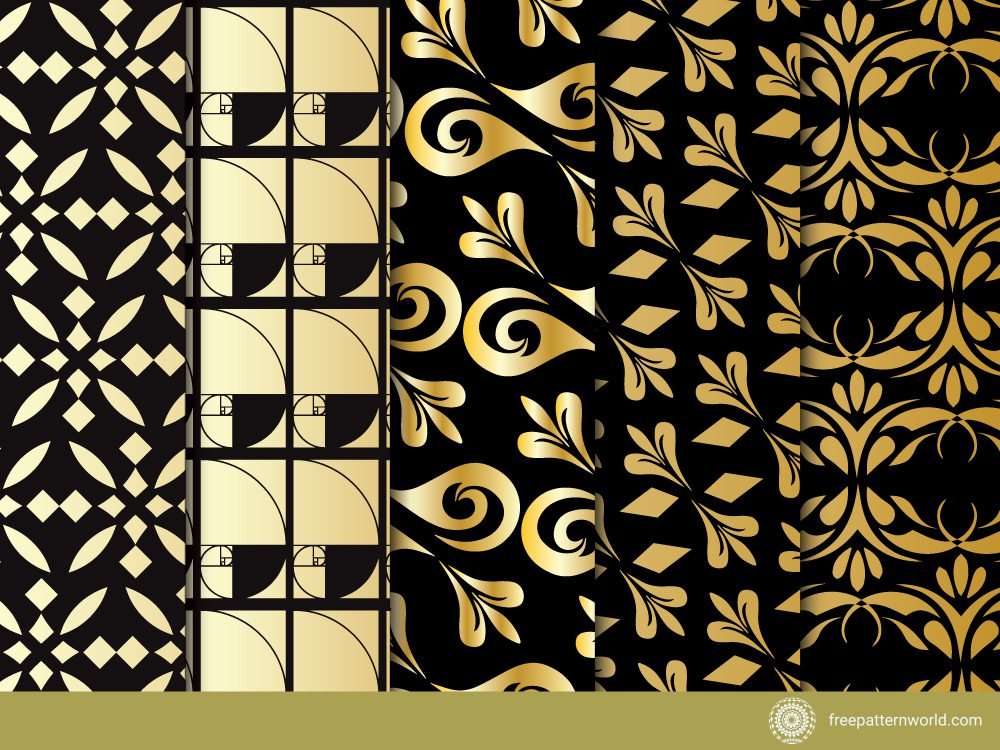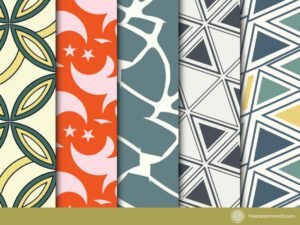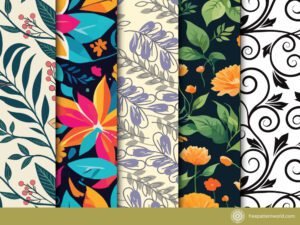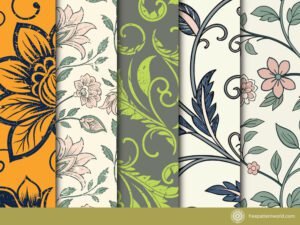
Table of Contents
Discover the elegance of the Golden Harmony Pattern – a design principle rooted in mathematics, nature, and symmetry. Learn its history, applications, and how it enhances visual balance in art, design, and everyday life.
Introduction
The Golden Harmony Pattern is more than just an aesthetic principle; it is a timeless expression of balance, proportion, and beauty that has captivated artists, designers, architects, and mathematicians for centuries. Rooted in the golden ratio—an irrational number approximately equal to 1.618—it reflects a harmony found in both natural and human-made creations. From the spiraling forms of galaxies to the precise curves of a seashell, this pattern unveils a world where geometry meets grace.
Whether you’re a designer aiming for visual balance, a mathematician exploring the beauty in numbers, or simply someone who appreciates well-crafted aesthetics, understanding the Golden Harmony Pattern opens doors to richer creative expressions. In this article, we’ll explore what the Golden Harmony Pattern is, its origins, where it appears in the world, and how it continues to influence design, architecture, art, and even modern branding.
What is the Golden Harmony Pattern?
The Golden Ratio: A Foundation of Harmony
The Golden Ratio, also known as phi (ϕ), is a mathematical ratio often found in nature, where the ratio of two numbers equals the ratio of their sum to the larger number. This unique relationship creates a sense of aesthetic balance, which forms the basis of the Golden Harmony Pattern.
From Numbers to Patterns
When applied visually, the Golden Ratio gives rise to spirals, rectangles, triangles, and other geometric configurations that feel inherently balanced. These elements form what is now widely referred to as the Golden Harmony Pattern—an arrangement that brings together order, beauty, and proportion.

Origins of the Golden Harmony Pattern
Ancient Greece and the Birth of Proportional Aesthetics
The concept of the golden ratio can be traced back to the ancient Greeks, who used it in architecture, sculpture, and design. The Parthenon in Athens is believed to incorporate golden ratio proportions in its façade and structure.
Leonardo da Vinci and Renaissance Art
During the Renaissance, the Golden Harmony Pattern gained widespread use thanks to artists like Leonardo da Vinci, who employed the ratio in his artwork, most famously in Vitruvian Man and The Last Supper. These works demonstrated how human proportions and composition could align with this mathematical principle.
Islamic and Indian Geometric Patterns
Intricate tiling and mandala art in Islamic and Indian cultures also reflect the symmetrical balance and repeating structures reminiscent of the Golden Harmony Pattern, even if not mathematically derived from the golden ratio.

The Golden Harmony Pattern in Nature
Spirals and Shells
The nautilus shell is a classic example of the golden spiral. Its chambered structure expands outward in perfect harmony with the golden ratio, showing how naturally this pattern arises.
Flower Petals and Leaves
Many plants grow leaves, petals, or seeds in arrangements that reflect Fibonacci sequences—closely tied to the golden ratio—ensuring optimal exposure to sunlight and efficient packing.
Galaxies and Hurricanes
Spiral galaxies and storm systems often display patterns akin to the golden spiral, revealing cosmic harmony that mirrors terrestrial design.
Applications in Art and Design
Graphic and Web Design
Designers frequently use the Golden Harmony Pattern to create visually pleasing layouts. Golden rectangles and spirals help guide eye movement, establish hierarchy, and promote a natural flow in compositions.
Typography and Logo Design
Brands like Apple, Pepsi, and Twitter have incorporated the golden ratio in their logos. This alignment subconsciously appeals to viewers by offering a familiar sense of balance.
Fashion and Textile Patterns
The Golden Harmony Pattern is also seen in fabric design, where spirals, grids, and golden rectangles contribute to visually appealing motifs that align with human aesthetics.
Historical Structures
From the Great Pyramids of Egypt to Gothic cathedrals in Europe, the proportions found in many ancient architectural marvels align with the golden ratio.
Modern Architecture
Architects such as Le Corbusier and Frank Lloyd Wright consciously used golden harmony in their designs, believing that such proportions elevate both the structure’s beauty and function.
Interior Design and Space Planning
In interior design, the Golden Harmony Pattern helps with furniture placement, wall spacing, and visual layering. Rooms designed around golden proportions often feel more comfortable and harmonious.

The Golden Harmony Pattern in Digital Media
UI/UX Design Principles
In digital interfaces, the golden ratio aids in button placement, image scaling, and content spacing. A harmonious layout increases user engagement and satisfaction.
Photography and Image Cropping
The “Rule of Thirds” in photography is a simplified version of the golden ratio. More advanced image composition relies on golden rectangles and spirals to guide focal points and balance.
How to Use the Golden Harmony Pattern in Your Work
Identifying the Ratio in Layouts
To use the pattern, divide your canvas using the golden ratio (1:1.618). The larger section usually carries the dominant visual element, while the smaller section supports it subtly.
Tools and Templates
Graphic design tools like Adobe Illustrator and Figma often have golden ratio templates or plugins that make applying the Golden Harmony Pattern easier.
Tips for Practical Application
- Start with a golden rectangle and place your focal point near the intersection of the spiral.
- Use golden proportions to define text and image blocks.
- Apply it in layers—macro layout and micro details alike.
Benefits of Using the Golden Harmony Pattern
Visually Pleasing Design
Designs using the golden harmony principle naturally resonate with viewers due to their subconscious familiarity with these proportions.
Improved User Experience
Balanced interfaces and designs not only look better but also improve usability and navigation, making users feel comfortable and guided.
Enhanced Brand Identity
Applying the Golden Harmony Pattern consistently in branding materials can create a timeless and trustworthy identity, rooted in classical beauty.
Common Misconceptions and Mistakes
Overusing the Ratio
Not all designs need to be based on the golden ratio. Over-reliance can make layouts rigid and uninspired. Use it as a guide, not a rulebook.
Confusing with the Rule of Thirds
Although related, the golden ratio and rule of thirds are not the same. The golden ratio is more mathematically complex and subtle in its divisions.
Ignoring Context
The pattern works best when used with purpose. Forcing golden proportions into a design that doesn’t call for them can disrupt rather than enhance the harmony.

Tools and Resources for Designers
Online Calculators and Grids
Several websites provide golden ratio calculators and grid overlays. These tools can help map out layouts and compositions precisely.
Books and Courses
Books like “The Golden Ratio” by Mario Livio or online courses on platforms like Skillshare and Udemy explore the concept in greater depth with practical examples.
Software and Plugins
Many design software packages offer golden ratio plugins or built-in grid systems. Adobe XD, Sketch, and Canva all provide ways to incorporate this pattern with ease.
The Golden Harmony Pattern in Modern Trends
Minimalist Design
The pattern works seamlessly with minimalist design, promoting clean lines and proportionate spacing that enhances simplicity.
Eco and Bio-Inspired Design
With increasing interest in biomimicry, the Golden Harmony Pattern connects the natural world with sustainable, organic design principles.
Branding and Visual Storytelling
Brands are using golden harmony not only for logos but also in storytelling layouts, presentation design, and packaging that align with aesthetic intelligence.

Conclusion
The Golden Harmony Pattern stands as a bridge between science and art, numbers and nature, ancient wisdom and modern design. Its continued relevance across cultures and disciplines is a testament to its universal appeal. Whether you’re working on a digital interface, painting a canvas, designing a building, or just arranging elements in a slide deck, the golden ratio offers a blueprint for harmony.
By mastering and mindfully applying the Golden Harmony Pattern, you tap into a design principle that elevates your work from functional to exceptional. Balance, beauty, and timeless appeal are no longer abstract goals—they become tangible outcomes shaped by mathematical magic.
Embrace the golden harmony in your next project, and let your designs resonate with a rhythm that is both natural and profound.
To download more Click here.
Download more free designs from freepatternword and freepik.
Support Us with Crypto!
If you enjoy our content and want to help keep this site running, you can support us with crypto. Your support is appreciated!
USDT(TRC20): TSW1iyNhUHiGvc2VdQvZqkqgCTGvdrnsY7
Bitcoin: 38ZHQNkrbZKYJhbLeFZiCrQdR3C2ddtAzV
ERC-20: 0xe1BD9D788256905c6efFd38333A3fF1b6DE3ce67
What is the Golden Harmony Pattern?

The Golden Harmony Pattern is a visual or structural design concept based on the golden ratio (approximately 1:1.618). It represents balance, symmetry, and proportion, often found in nature, art, and architecture.
Where can I see the Golden Harmony Pattern in nature?
You can find the pattern in nautilus shells, sunflower seed arrangements, pinecones, hurricanes, and spiral galaxies. These natural formations closely follow the golden ratio or Fibonacci sequence.
Why is the Golden Harmony Pattern important in design?
Designers use this pattern to achieve visual balance, improve user experience, and make compositions more naturally attractive to the human eye. It’s commonly used in graphic design, architecture, photography, and branding.
Are there tools to help apply the Golden Harmony Pattern?
Yes. Tools like Adobe Illustrator, Figma plugins, Canva grids, and online golden ratio calculators help designers implement the Golden Harmony Pattern efficiently.



